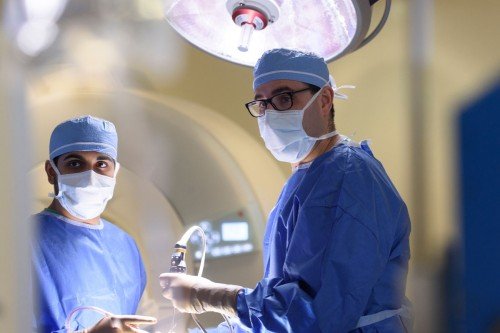Rathke’s cleft cyst is a benign (not cancer), fluid-filled growth that usually develops between the two lobes of the pituitary gland at the base of the brain.
In embryonic development, the anterior lobe of the pituitary gland develops from a saclike structure known as Rathke’s pouch. The cyst is thought to occur when the inside of the Rathke pouch does not go away as it usually does during normal fetal development. This leaves a space that can fill with fluid and grow over time.
People who have Rathke’s cleft cyst were born with the condition.
Rathke’s cleft cyst is rarely diagnosed because most do not produce symptoms. There are no known causes for why it develops in some people and not others, or why some cysts cause symptoms and others do not. Women are more likely to receive treatment for Rathke’s cleft cyst than men.
Rathke’s cleft cyst rarely causes symptoms or problems during childhood. Most often, they are found in adults during an MRI scan to diagnose another health condition.
Symptoms of Rathke’s Cleft Cyst
Rathke’s cleft cyst can press on the nerves leading from the eyes to the brain, which can cause vision changes. The most common symptoms include:
- vision changes
- frequent headaches
- nausea
- feelings of drowsiness or fatigue
Cysts can also press on the pituitary gland, which can affect the levels hormones secreted by this gland. This can cause symptoms at different stages of life, including:
- lack of growth or late puberty in children
- irregular or absent menstruation
- production and leaking of milk from the breasts that is not related to pregnancy or childbirth
- low blood pressure
- digestive issues, such as constipation
- low or no libido
- extreme thirst
- obesity
- unusually dry skin
- difficulty regulating body temperature
Rathke’s Cleft Cyst Diagnosis
If your doctor suspects a Rathke’s cleft cyst, you may need to have an MRI scan of the brain, where the pituitary gland is located, to better see the Rathke pouch, the area where these cysts develop.
Your doctor may also perform blood tests to evaluate the levels of pituitary hormones in the body.
Rathke’s Cleft Cyst Surgery
The treatment of Rathke’s cleft cyst depends on the symptoms. Small cysts may not require treatment. For larger cysts, our experts may recommend surgery, which could include draining and removal of the cyst.
Memorial Sloan Kettering surgeons are experienced in using a minimally invasive technique called transsphenoidal surgery to remove cysts. The approach allows our surgeons to bypass brain tissue, operating instead through an incision inside the nasal passage. The risk for neurologic complications with this technique is very low, and the surgery leaves no visible scar.
Request an Appointment
Monday through Friday, to (Eastern time)




